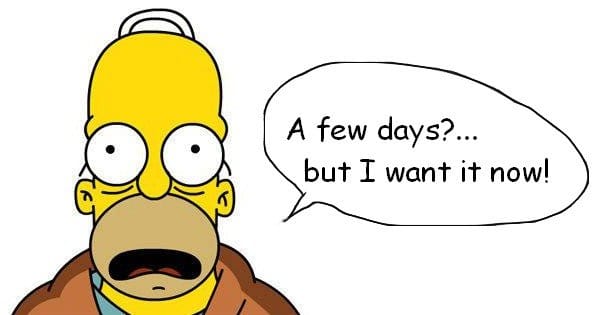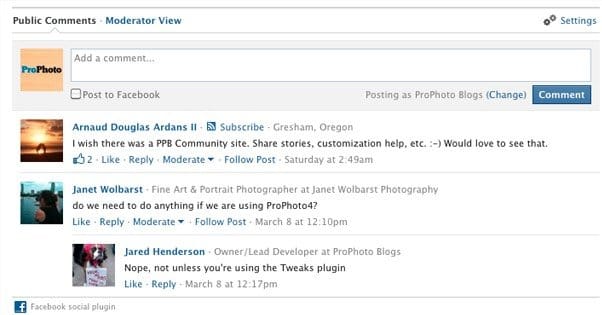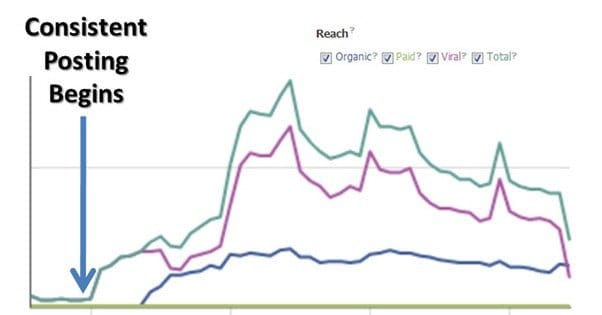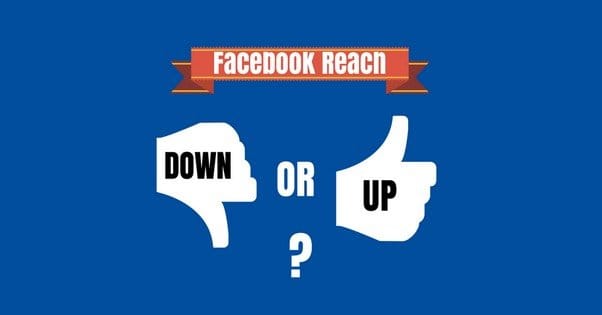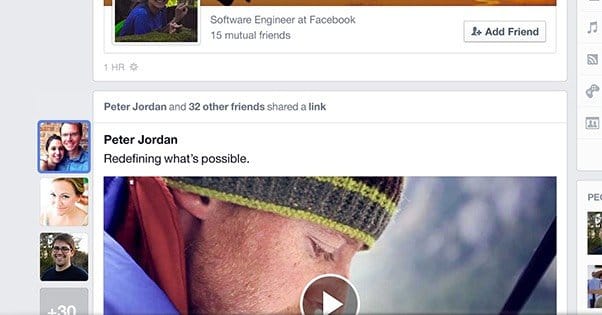 Written by ContentPowered.com
Written by ContentPowered.com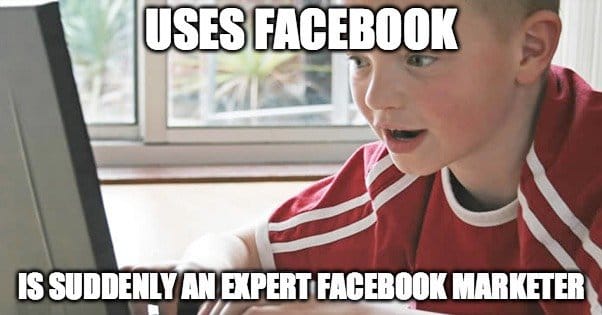
Every field has its experts. Business has marketing experts, and within the overall field of marketing, there are specialists in different forms. Facebook marketing has big names like Jon Loomer and Heidi Cohen. They consistently give good advice, but people often misinterpret that advice, or dig into their archives and form opinions based on years-old information.
I’m not here to refute anything specifically said by either of those figures. Instead, I’m here to give you a general idea of what you might be doing wrong with your marketing. Consider this a “basics” list you can use for troubleshooting, or a list of general warnings to read before you dig in to Facebook marketing in earnest.
1. Don’t Abandon Facebook After a Lack of Immediate Results
By far the number one reason businesses fail on Facebook is a lack of persistence. It’s disheartening, it’s depressing, to start up a marketing effort and see no appreciable results in weeks. By every traditional measurement, it’s an exceedingly poor return on investment. Plus, it just feels bad to log in to check your Facebook profile and see a meager few dozen followers, if that.
Facebook is like an avalanche. When it happens, it happens fast and it’s incredibly powerful. Before it can happen, though, it needs a lot of long, slow buildup – snow on the slopes – and a trigger event to set it off. That trigger event isn’t your concern right away. Rather, you just need to take your time and build up the snowpack in preparation for the coming avalanche.
Facebook marketing is very much a long-term investment, so if you quit early, all you’re doing is wasting that investment. It’s almost harder to get an old Facebook page into prominence than it is to start a new one, so it’s best to not abandon your page if you can avoid it.
2. Always Use Images
Facebook is very much a visual platform these days. It’s not quite as centered around images as Pinterest or Instagram, nor is it reliant on video like Vine or YouTube, but I challenge you to scroll through a feed and count how many posts, out of 100, don’t have images.
Imageless posts have their place, typically when you have something longer or more serious to discuss. For the average, day-to-day posting, through, you’re going to want images attached to just about everything.
When you generate a preview for a link, an image is attached. When you’re linking to your site, you can control this image by specifying it with the Facebook graph meta data. Otherwise, Facebook will choose a few images from your page to give you as options, but they aren’t always useful. I’ve seen Facebook choose logos, unrelated images on the page, and even avatars from the comments section.
Hashtags are great on Twitter, where they were invented and where they’re used to accumulate conversations, collate information and even become punchlines for jokes. That’s Twitter, though, and Facebook is a very different platform.
Do not use hashtags on Facebook. There’s pretty much no reason to use them. They don’t apply to everyone on the site; they only apply to people who are friends with each other or with the pages they follow. In other words, you can have a dozen different people using the same hashtag, but none of them will see each others’ posts unless they’re all friends.
Studies have been performed that indicate hashtags actually decrease the reach and engagement of a post. Some people just hate them on principle, most people ignore them, and the very few people who do use them tend to use them ironically. None of those are goals a business should aspire to.
Plus, hashtags are a surefire indicator that a business is automatically cross-posting between Facebook and Twitter, which a lot of users don’t like to see.
4. Always Respond to Comments
Facebook is a social network, which means you need to be social. To be social, properly, you need to have a persona. You need to be more than just corporate white papers and impersonal blog post re-shares. You need to show a glimpse behind the curtain, to where you can show off the human side of your business.
People like to feel as though they’re really talking to someone at your business. Even though intellectually they know whoever runs your page is probably a social media manager, a marketer, or an intern, it’s still official communication. As long as it doesn’t feel like you outsourced your posts to an Indian call center, you’re doing well.
A big part of being social, though, is responding to comments. When you make a post, that’s not the end of the story. You want people to like it, share it, comment on it, and follow links to whatever destination you post. You encourage this to happen by monitoring the comments people leave and interacting with them. You don’t necessarily need to respond to every single post, but anything with substance deserves a reply.
5. Don’t Post to Facebook Like RSS
There’s more to posting on Facebook than just posting a constant feed of links to your blog. That gets tiring very quickly, and users don’t feel like they gain any benefit from following your page if that’s all they get to see over and over. This isn’t a rule against posting blog links, of course; I’m just saying you need to post other pieces of content.
What other kinds of content can you post? Here are some ideas.
- Images with thought-provoking questions.
- Details of upcoming or recent events.
- Blog posts made by other prominent figures in your industry, that you think people who follow you might want to read.
- Interesting infographics that are relevant to the world at large, some local issue, or an industry issue.
- Curated and amusing content from around the web. Anything that goes largely viral can be eligible here, though you don’t want to look like you’re always on the tail end of trends.
Curating content is the key to populating a feed with information that doesn’t require you to write a million blog posts and invest heavily in imagery and graphic design.
6. Always Keep a Consistent Schedule
I’ve explained this before, but Facebook operates on an algorithm the community calls EdgeRank. The way it works, Facebook keeps a calculation between your page an each individual person who follows you or could potentially see your posts. Each time you make a post, Facebook pulls a selection of those people and shows your post to them. The number of people who see the post is your reach, which seems to hover between5 and 15 percent, depending on the business and audience in question.
What criteria does Facebook use to determine who is selected? There’s a small element of randomness, but it’s largely a determination based on the user’s past interactions with your page. If they interact with you more often – clicking links, liking posts, commenting, etc – they see more of your posts. If they ignore your posts, they see less of them.
The reason you need to maintain a constant schedule of updating Facebook is because of this algorithm. If you go without posting for a week, that’s a week where a bunch of people aren’t seeing your posts. Then you go back to try to engage with them, but very few of them see your posts, because they haven’t interacted with you in a while.
7. Don’t Post Overly Promotional Material
Facebook doesn’t want you using organic posts to sell your products. If you want to do that, they believe, you should be using Facebook ads. Organic posts are for interaction, for information, for engagement, and for viral activity.
To enforce this preference, Facebook has started to penalize overly promotional posts. This made a lot of businesses angry or scared, but it’s really not as bad as it seems. These types of posts, honestly, just didn’t work to begin with. Now, there’s just extra incentive to stop trying to force them to work.
You can read this rundown by Jon Loomer to learn more about what actually constitutes an overly promotional post, and what you can do to promote yourself organically in the mean time. The short version is, basically, don’t post organically the same content you use in ads, don’t push people to enter contests with no context, and don’t try to sell products through organic posts.
8. Always Comply with Facebook Contest Guidelines
Speaking of promoting contests. Contests are a very good way to get a lot of people interested in your page very quickly, but you need to be careful with running them. Running them in a way that violates Facebook guidelines can get the contest removed, or get your page punished in some way.
- You can run contests through an app, and you can promote them on your timeline, but you have to include context. You can’t run a contest on a personal profile.
- You can solicit various forms of engagement as ways to enter the contest, but you cannot require a page like or share as the sole means of entry. WooBox is a good app that gives you a bunch of different options for entry methods.
- You have to have official rules and terms posted clearly somewhere. Likewise, you have to have a disclaimer that Facebook is not endorsing or sponsoring the contest.
- To contact the winner, you can post a status update, make a comment, send an email to the winner, tweet them, or announce it on your website. You’re not allowed to send direct messages to users from a page, unless it’s a response. In any case, the winner needs to be publicly identified, to prevent fraud.
Also, it’s not a guideline, but I highly recommend making sure your prize is something unique to your business. If you’re giving away something anyone would want, like a new Samsung Galaxy tablet, you’re just going to get people entering your contests who want the prize. They don’t care about your business, and they couldn’t care less about your products; they just want the tablet. All they do once they follow your page is dilute your ability to reach real fans.
9. Don’t Write Too Much
The average length of a highly-shared viral post is shorter than a tweet. You have around 90-100 characters to catch and entice a user. A lot of times, they’re going to skip your post and just look at the picture or preview attached to it anyways.
That said, longer posts definitely have a place. Your posts can be as long as they need to be to convey what you need to convey. I know that’s a really fickle thing to say, but it’s true. Write as much as you need to. The thing you need to remember is to stop there. Write as much as you need to, and no more.
10. Always Post Like a Fan
Posting like a marketer makes your Facebook page feel like it’s run by a marketer. You need to post like you’re a fan of your own brand. This is actually surprisingly difficult to do, just because you are a marketer. You’re trying to market your brand using social media, and that’s the problem. You need to stop trying to market – in a way – and instead try to engage with and encourage users to like your brand as much as you do.
Facebook is about interactions. It’s about relationships. You’re there to inform your readers. You’re there to educate them about your brand. You’re there to empower them to make good decisions about what they want to do and what they want to buy. You just happen to be doing all of this in a way that convinces them to trust you with their business.
In the end, that’s what it’s all about. You’re building trust with your fans, so they trust you when they want to buy something you sell.
11. Don’t Worry About Reach Alone
Reach is often heralded as the most important metric on Facebook, but it’s really not true. Reach is just the number of people who have your post put in front of them in their feeds. It says nothing about the number of people who convert, the number of people who engage, or even the quality of the people who see your post. You could have an astonishing reach of 100%, but if your audience is entirely gained through bot purchases and generic contests, none of them are going to earn you a penny.
Reach is good to monitor, but it’s just one metric among many, most of which are more important. You need to pay particular attention to the number of actions taken on a given post, be it link clicks, engagement, shares or page follower growth.
12. Always Monitor Your Audience
How much do you know about your audience? If you’ve been growing it properly – the slow, organic way – you’ll have a lot of interesting data. That data will also be quite accurate, though it might be a little skewed due to the variable nature of Facebook itself.
Through Insights, you can see a lot of demographic information about your audience. You can see their ages, genders, and distribution of gender across various ages. You can also see a readout of how those users are engaging with your posts, and which posts get the best engagement.
It’s always a good idea to keep an eye on which posts of yours are doing the best. Study them, analyze them, and figure out what they have in common. That’s what you can do to repeat that success and build upon it.
13. Don’t Link to YouTube Videos
Facebook has been growing as a video host for years, but recently it has begun to rival or even surpass YouTube in the realm of online video. There’s some fuzziness to the claim that Facebook is better, of course. Facebook videos auto-play and they have less verification of views than YouTube’s complex algorithms.
That said, Facebook is very much trying to promote video on their platform, and in doing so, they are subtly frowning upon YouTube links. That’s not to say that you’ll be penalized for sharing them. You won’t. However, you can potentially reach more eyes by uploading your video to Facebook and sharing it natively, rather than putting it on YouTube and trying to promote a link.
14. Always Have Something for Users to Do
Just about every post should have something for the users who read it to do, and I don’t mean just liking and sharing it. Sharing and liking a post is good, but those are baseline actions. Most of the time, you should have some other objective as well.
For example, any time you link to your blog, you’re trying to encourage users to click out to that blog. However, other posts can include snippets of your blog posts and encourage users to strike up a discussion. Soliciting comments by starting a discussion is a good way to get more attention and more engagement.
Other forms of post, of course, have their own forms of action. Videos have views, apps have installs, links have clicks; it’s all an action you can encourage users to take.
15. Don’t Ignore Facebook Ads
Facebook ads are where a lot of Facebook marketers go wrong, and they help drive away a lot of businesses that could find reasonable success on the site. The problem is, if you don’t know what you’re doing, you’re going to be paying to show your ads to a lot of people who don’t care about them. Worse, you might end up in front of a clickfarm, which will eat up your budget, inflate your audience, and give you absolutely nothing of value.
Ads are too complex a subject to cover here, but suffice to say they’re too valuable to ignore completely. That said, I highly recommend taking the time to research how they work and learn how to use them properly before you go investing any significant budget into running them.
